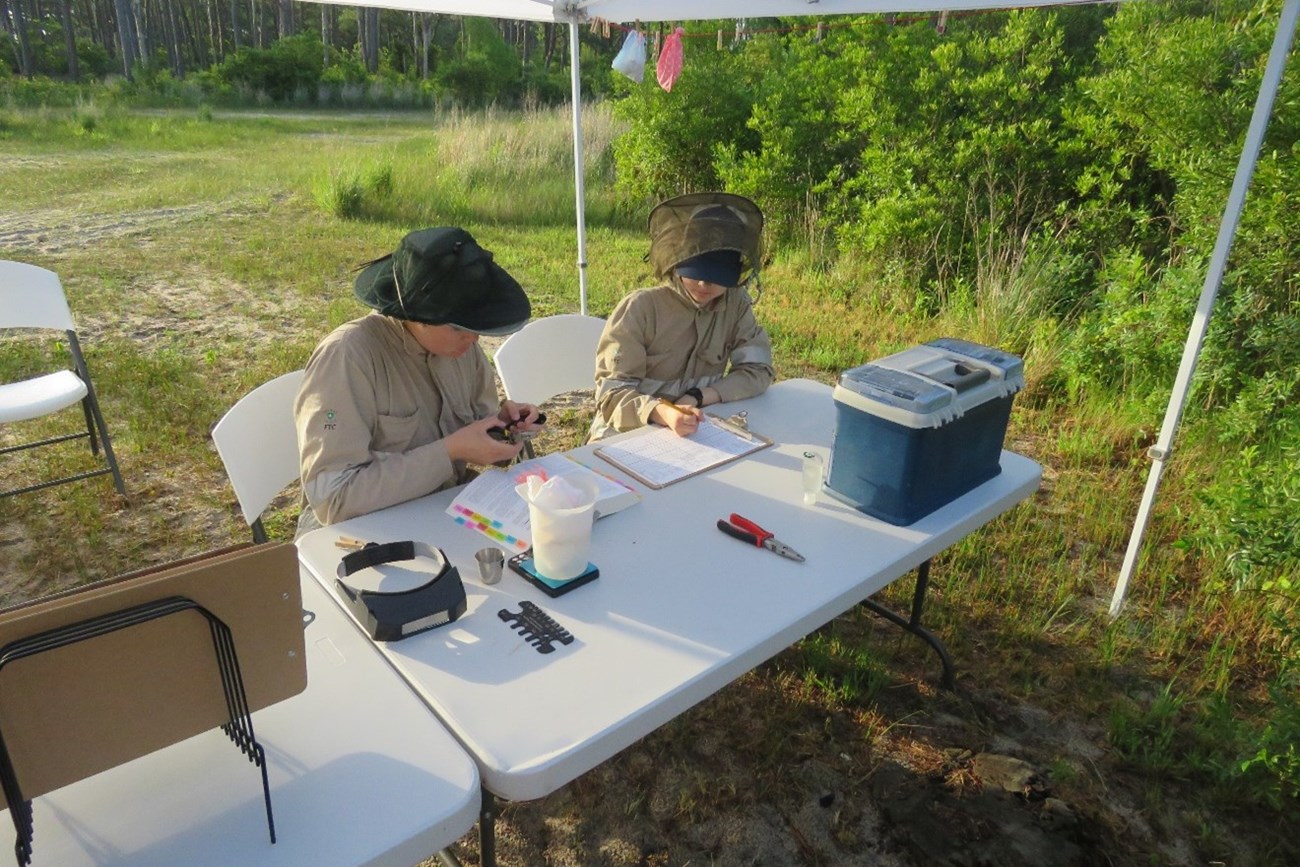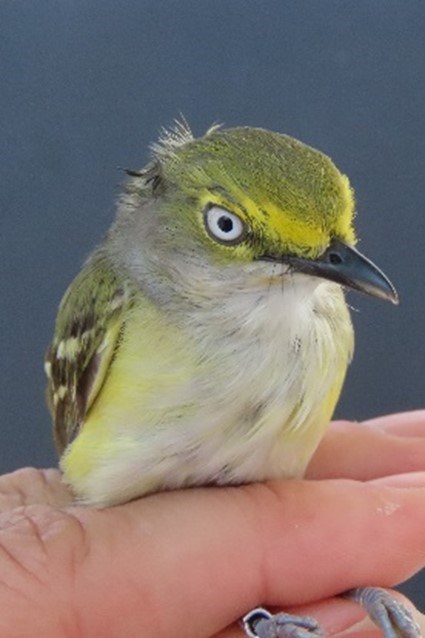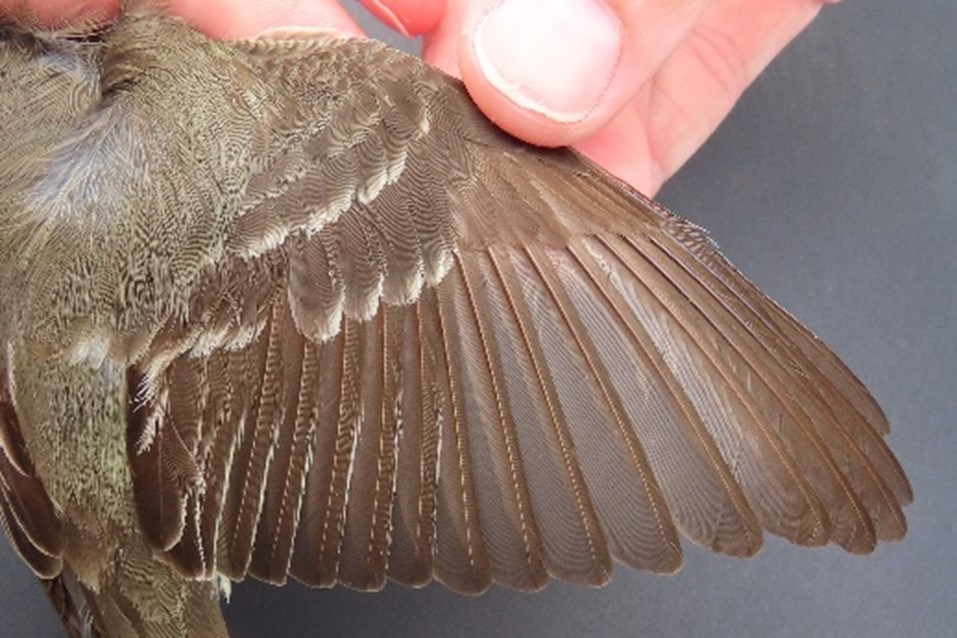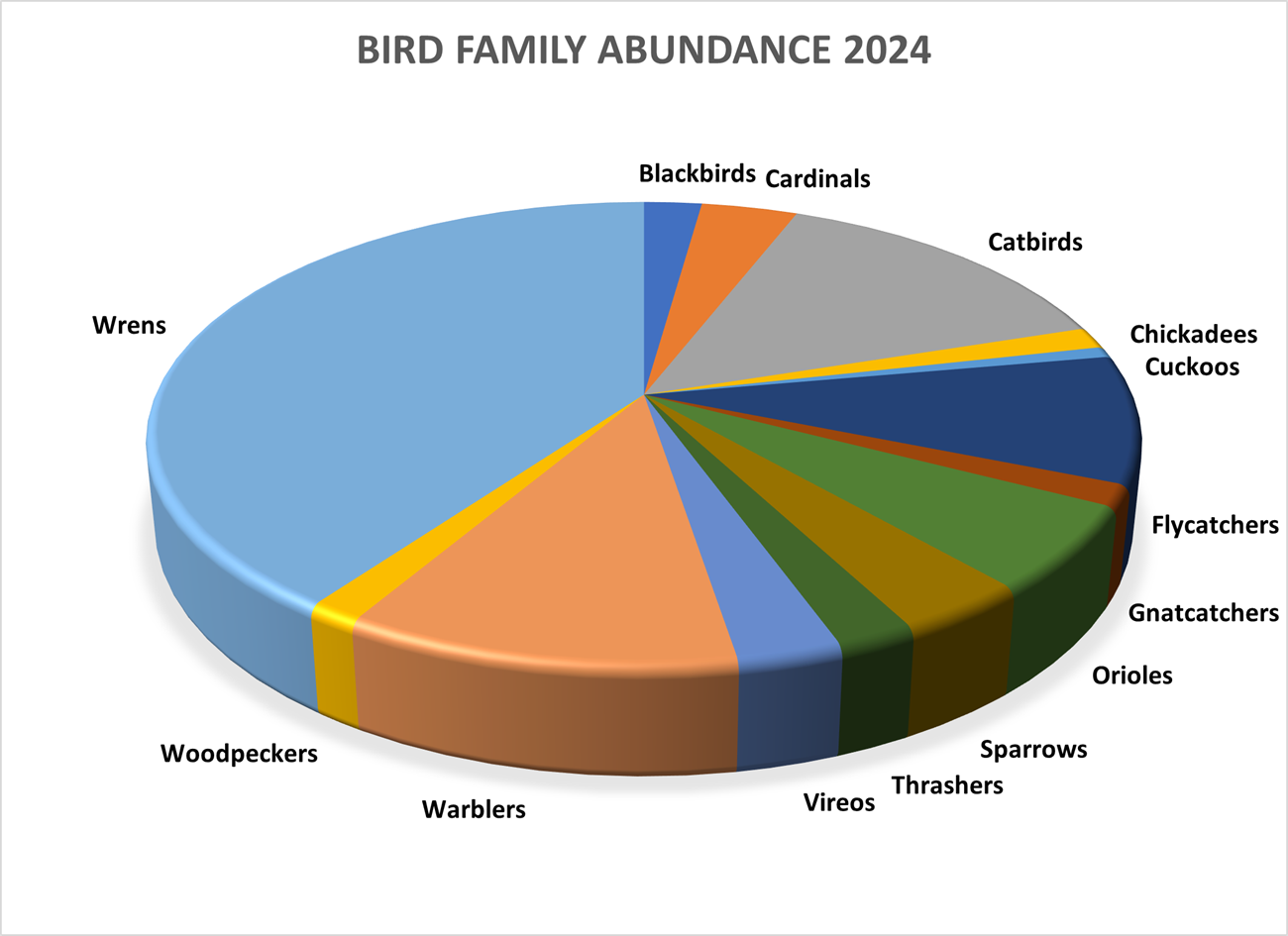Last updated: December 31, 2024
Article
Monitoring Avian Productivity and Survivorship at Assateague Island
Background
The Institute for Bird Populations (IBP) developed the Monitoring Avian Productivity and Survivorship (MAPS) program to explore reasons for population declines, the effects of climate change, and locate where conservation needs are most critical. The first MAPS stations began operating in 1989, and in 2024 there are over 1,200 stations across the United States and Canda.Assateague Island National Seashore (ASIS) established a MAPS Station in 2022 to better understand the health of maritime forest bird communities on Assateague Island. This project will provide information on reproductive success of breeding passerines (songbirds) in maritime loblolly pine forests. Maritime forests on barrier islands provide a unique habitat for wildlife but are facing many threats associated with sea-level rise and decimating insects.

NPS
A Day at the Banding Station
A MAPS bird bander’s day starts a few hours before dawn. As the sun is rising through the loblolly pines, we open ten mist nets spread uniformly throughout our 20-acre forest. Forty minutes later, it is time for the first net run. We carefully check each net for entangled birds, and extract those that have been caught. Once at the banding station, we will take the bird’s weight, then place a small metal band on the bird’s leg. Each band has a unique number which allows for every bird to be individually identified. This provides banders with the opportunity to learn when and where the bird was first banded, as well as compare data each time the bird is captured. Next, we record body characteristics and measurements which help us determine the age and sex of the bird. Once we verify that we have collected all the appropriate data, we release the bird unharmed. After six hours of net runs and banding, we close the nets and pack up the banding station. We will be back for another banding session in about 10 days.
NPS

NPS
Findings after 3 Years of Banding
Over the course of 3 years, we have captured and banded 535 individual birds representing 39 species. In 2022, we banded 182 individuals representing 31 species. We caught 28 House Wrens and 11 Carolina Wrens making up the most abundant family (Figure 1). In 2023, we banded a total of 218 individuals representing 29 species. We caught 65 Gray Catbirds (Mimidae) which represents the most abundant family (Figure 2). In 2024, we banded a total of 135 individuals representing 25 species. The most abundant family was the wrens (Troglodytidae) with 38 House Wrens and 16 Carolina Wrens.
NPS

NPS

NPS
We are only three years into this project, but we’ve already had some interesting observations.
- In 2023, we caught a record number of 24 individual warblers (Parulidae) representing 7 different species.
- A House Wren that was banded at our station on August 2, 2022, has been caught by our team each year of operation. When first captured, this House Wren was aged as an adult male and now, in 2024, he is at least 3 years old. While he has been caught at a different net each year, each capture has occurred in the southwest corner of the forest.
Birds as Bioindicators
Park managers recognize the importance of studying ecosystem health in a dynamic environment such as a barrier island. The NPS Inventory and Monitoring Program (for Assateague Island, the Northeast Coastal and Barrier Network) conducts long-term ecological monitoring to provide valuable data to park managers and the public. One vital sign that’s been identified is forest health, which includes forest structure, composition and wildlife dynamics (NPS 2024). Their team of researchers have been surveying established long-term monitoring plots in the maritime forest on Assateague Island since 2019. Since bird diversity and population dynamics are bioindicators of forest health (Drever & Martin 2010; Segura et al. 2014), park managers added the MAPS program to enhance their knowledge of the maritime forest ecosystem.There are several forest obligate species that breed at ASIS such as the Pine Warbler and the Eastern Wood-Pewee. These birds rely on a healthy forest ecosystem year after year to successfully reproduce. Therefore, the data from the MAPS station and the Northeast Coastal and Barrier Network are great barometers for understanding Assateague Island’s forest health through time.
Did you Know?
One piece of data that we collect is the amount of fat we see on a bird. Fat can be observed just below the surface of the skin and appears yellow-ish. Birds undergo hyperphagia (excessive eating) approximately two weeks before migration. Therefore, higher quantities of fat reserves can be used as an indication that a bird may migrate soon (Guillemette et al, 2012). This makes fat quantity an important characteristic!Written by: Emma Cummings, Scientists-in-Parks (SIP) Intern
Park Contact: Tami Pearl, Biological Science Technician
Sources
Drever, M. C., & Martin, K. (2010). Response of woodpeckers to changes in forest health and harvest: Implications for conservation of avian biodiversity. Forest Ecology & Management, 259(5), 958–966. https://www.sciencedirect.com/science/article/pii/S037811270900869XGuillemette, M., Richman, S. E., Portugal, S. J., & Butler, P. J. (2012). Behavioural compensation reduces energy expenditure during migration hyperphagia in a large bird. Functional Ecology, 26(4), 876-883. https://www.academia.edu/1625807/Behavioural_compensation_reduces_energy_expenditure_during_migration_hyperphagia_in_a_large_bird
NPS. 22 July 2024. Inventory & Monitoring at Assateague Island National Seashore. National Parks Service. Inventory & Monitoring at Assateague Island National Seashore (U.S. National Park Service) (nps.gov)
NPS. 26 June 2024. Upland Forests. National Parks Service. Upland Forests (U.S. National Park Service) (nps.gov)
Segura, A., Castaño-Santamaría, J., Laiolo, P., & Obeso, J. (2014). Divergent responses of flagship, keystone and resource-limited bio-indicators to forest structure. Ecological Research, 29(5), 925–936. https://www.researchgate.net/publication/272012610_Divergent_responses_of_flagship_keystone_and_resource-limited_bio-indicators_to_forest_structure
The Institute for Bird Populations. MAPS: Monitoring Avian Productivity and Survivorship. IBP - the MAPS Program (birdpop.org)
